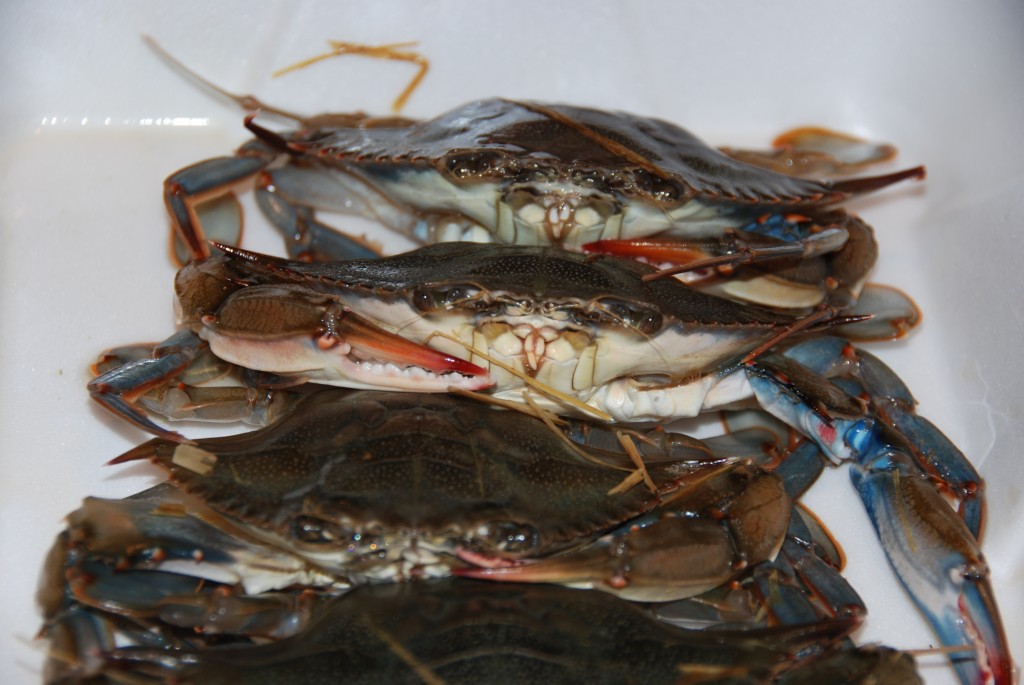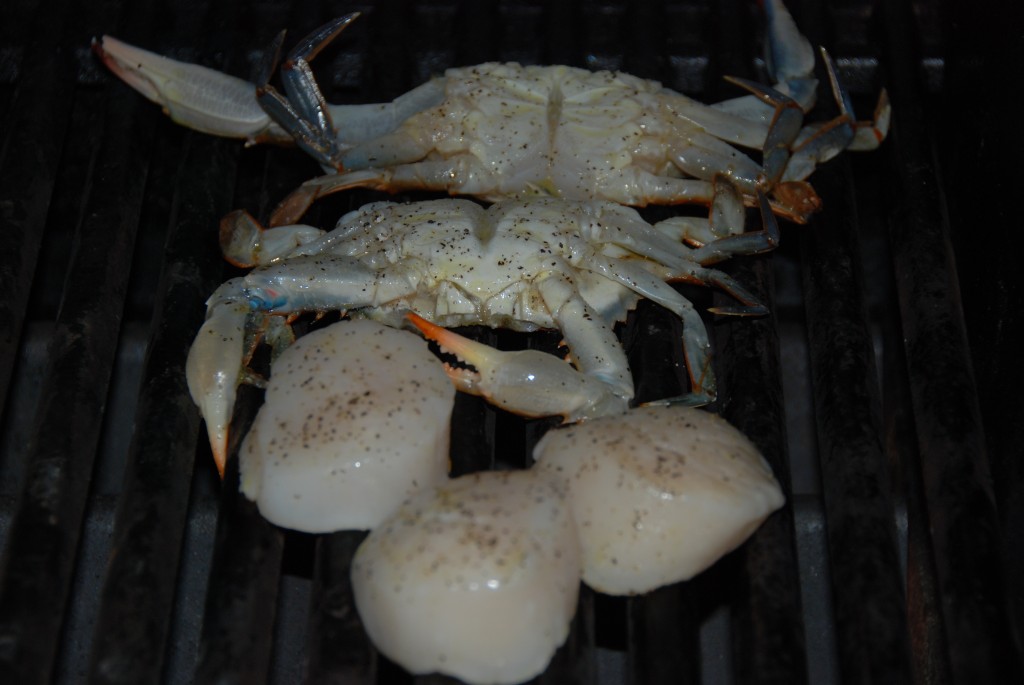Just as I love to roam a farmer’s market, I equally love going to the fish monger. Women and men in rubber boots and coveralls cheerily chat with you about what’s the freshest, what they’re almost out of, and even the best way to prepare it. You can select the exact fish you want and watch them clean and fillet it. It smells like the ocean. You feel like a chef. It makes me happy.
A couple of weekends ago, we cooked our very first soft shell crabs. If you know me, the fact that this was the first time I had attempted this at home might seem crazier than the idea that up until last week I hadn’t made bruschetta. Soft shells are my absolute favorite. (I often make a new year’s resolution to eat more of them.) Making them at home was somehow intimidating, but when they stared up at me from their ice bed at the fish monger and my favorite lady in rubber boots told me they had just come in off a local fishing boat, I knew the time had come.
Soft shells are not a type of crab, but rather a phase of the crab’s life after its exoskeleton has molted, leaving a soft shell behind. In the United States soft shells are usually blue crabs and the season for them is short.
Apparently cooking soft shells at home has a lot of advantages. Killing them (I’ll spare the details for the squeamish readers) just before you cook them translates to plump and juicy crabs. In a restaurant, even if they were killed a mere hour before they were cooked, they run the risk of drying out.
For a true experiment, we threw a couple on the grill (with some scallops to keep them company).
And dredged a few in flour before sauteing them in butter.
Though both versions were delicious, there’s just something special about a sauteed soft shell.
We’ve already made them again. I might just keep my new year’s resolution.




